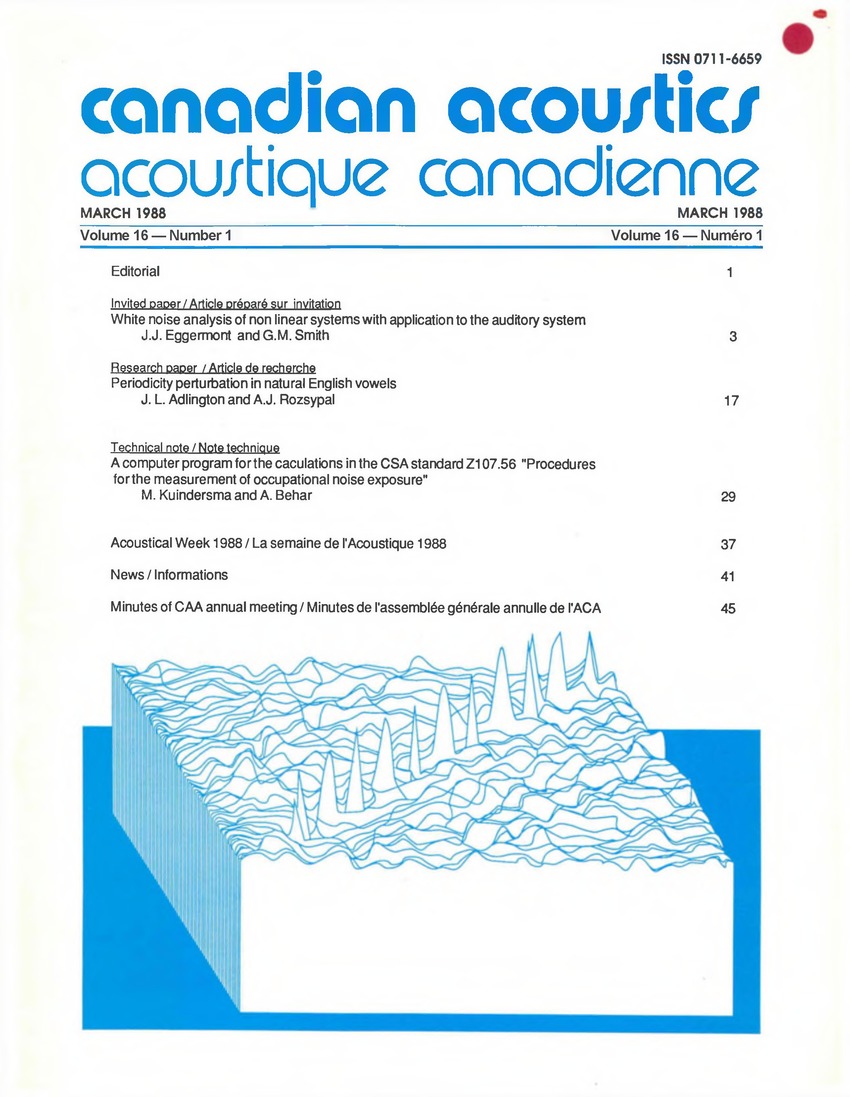White noise analysis of nonlinear systems with application to the auditory system
Keywords:
hearing, nonlinear systems, physiological models, auditory system, cross correlation, Gaussian wide band noise, uniform distributed random number generator, grassfrogAbstract
Linear systems analysis with tones, clicks or white noise results essentially in the same information: the impulse response or frequency response of the system. In non-linear systems, such as the auditory system, these three methods provide different results. Furthermore the outcome will be level dependent. Higher order cross correlation with Gaussian wide band noise as input signal provides, in principle, a method to analyze non-linear systems. For that purpose one needs noise with a zero valued second order auto correlation function. Commercially available pseudo-random noise generators do not produce noise with satisfactory properties. Software generated noise with Gaussian amplitude distribution can easily be generated on basis of the uniform distributed random number generator. Using noise with these improved characteristics the authors studied neurons in the auditory midbrain of the grassfrog. Two examples are shown and a comparison is given between the results obtained with the white noise method and the more traditional pure tone analysisAdditional Files
Published
How to Cite
Issue
Section
License
Author Licensing Addendum
This Licensing Addendum ("Addendum") is entered into between the undersigned Author(s) and Canadian Acoustics journal published by the Canadian Acoustical Association (hereinafter referred to as the "Publisher"). The Author(s) and the Publisher agree as follows:
-
Retained Rights: The Author(s) retain(s) the following rights:
- The right to reproduce, distribute, and publicly display the Work on the Author's personal website or the website of the Author's institution.
- The right to use the Work in the Author's teaching activities and presentations.
- The right to include the Work in a compilation for the Author's personal use, not for sale.
-
Grant of License: The Author(s) grant(s) to the Publisher a worldwide exclusive license to publish, reproduce, distribute, and display the Work in Canadian Acoustics and any other formats and media deemed appropriate by the Publisher.
-
Attribution: The Publisher agrees to include proper attribution to the Author(s) in all publications and reproductions of the Work.
-
No Conflict: This Addendum is intended to be in harmony with, and not in conflict with, the terms and conditions of the original agreement entered into between the Author(s) and the Publisher.
-
Copyright Clause: Copyright on articles is held by the Author(s). The corresponding Author has the right to grant on behalf of all Authors and does grant on behalf of all Authors, a worldwide exclusive license to the Publisher and its licensees in perpetuity, in all forms, formats, and media (whether known now or created in the future), including but not limited to the rights to publish, reproduce, distribute, display, store, translate, create adaptations, reprints, include within collections, and create summaries, extracts, and/or abstracts of the Contribution.


